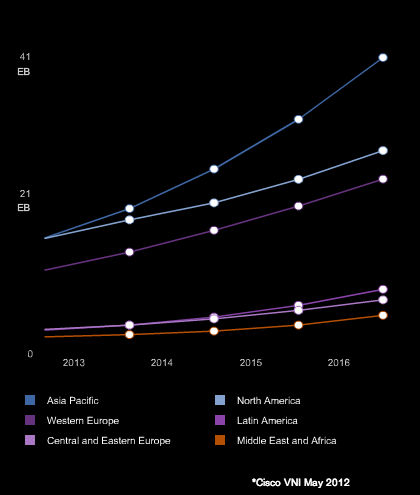It looks like just 10 percent of mobile data traffic will be based on 4G networks in 2017, according to Cisco Systems’ annual mobile forecast.
It’s significant growth from the extent of today’s 4G deployments, which make up just 1 percent of global connections.
But with 4G LTE devices like the iPhone 5 becoming common in larger economies, we may feel the technology rift between early adopter countries and laggards even more in four years’ time.
Cisco’s measurement of 4G includes WiMax too, in addition to cellular 4G, so LTE will support less than 10 percent of global network connections.
WiMax was pipped as a mobile 4G standard before cellular 4G was ready for the market sometime back around the mid-2000s, but in spite of its first-mover advantage, more carriers have chosen to deploy cellular 4G like LTE.
One reason is that upgrades to 4G can piggyback on existing 3G infrastructure. (Think of WiMax more like super-charged Wi-Fi, so it’ll take entirely new equipment.)
Another prediction that Cisco makes for 2017 is that the Asia-Pacific will generate 47 percent of all mobile data traffic in the year, consuming a whopping 5.3 exabytes a month. North America is next at 2.1 exabytes/month, followed by Western Europe at 1.4 exabytes/month.
The Middle East and Africa will consume 0.9 exabytes/month, Central and Eastern Europe at 0.8 exabytes/month and Latin America at 0.7 exabytes/month.
Speaking in Japan, Doug Webster, vice president of service provider marketing at Cisco, said that the country will consume a huge 16 percent of global traffic on its own.
Global mobile traffic will also grow at 66 percent every year between now and 2017, and will hit 134 exabytes of data. That’s about 3 trillion video clips, and represents about 46x of all mobile traffic from 2010.
2017 will bring on 3 billion more mobile devices—but just an addition 1 billion people onto the network. A proportion of these devices will be Internet-enabled appliances and M2M (machine-to-machine) communication-ready systems like smart car dashboards, Webster said.

